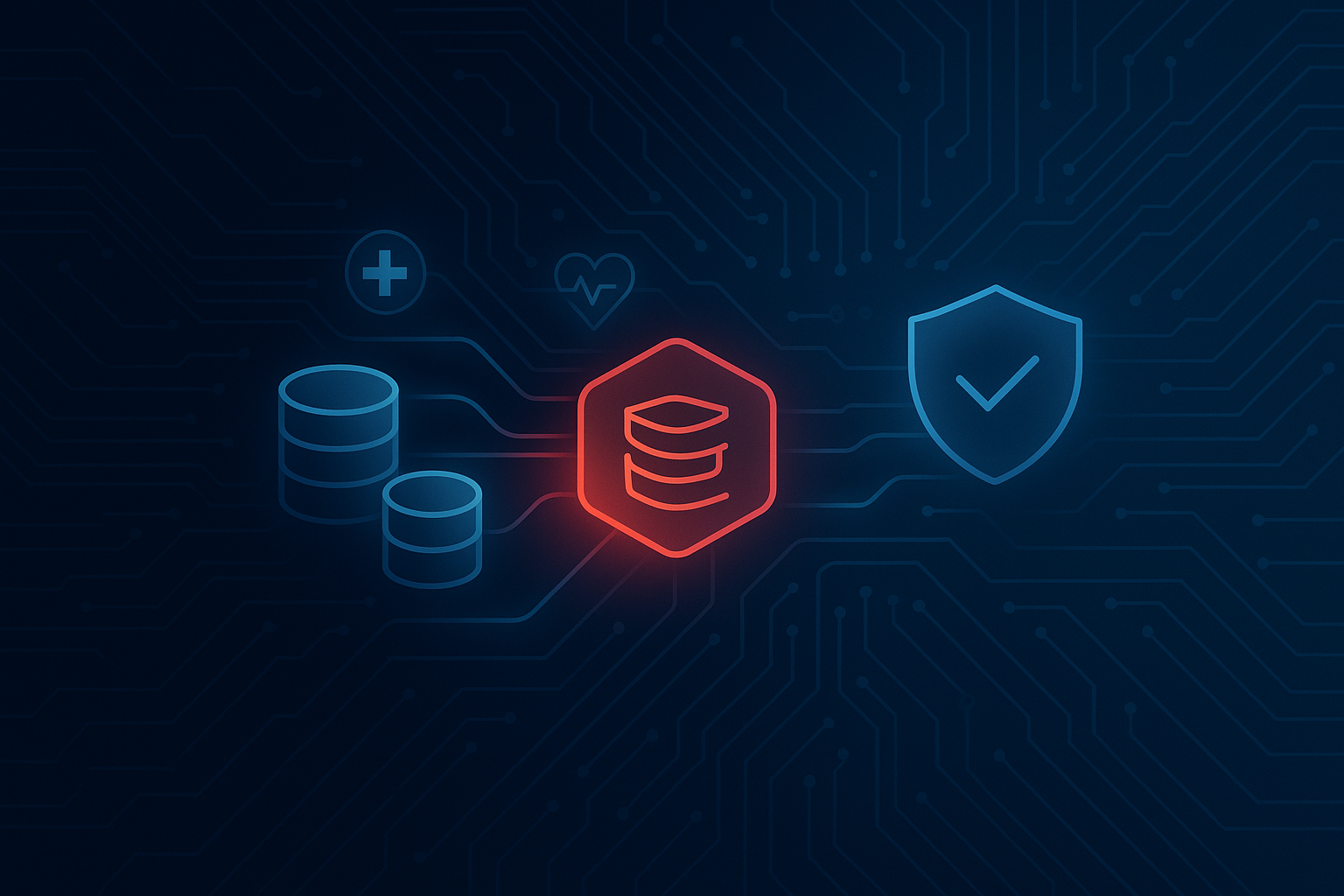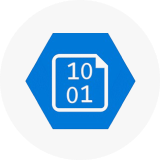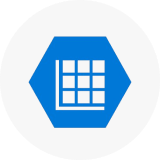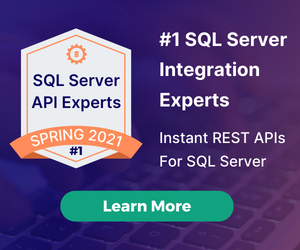How to Securely Access and Unlock Epic (EpicCare) Data: 2025 Guide to Integration Options for Apps, AI, and Analytics
by Kevin Hood • October 29, 2025
The Challenge of Accessing Epic Data
Epic (EpicCare) is the clinical backbone for most major healthcare organizations. Yet, for developers, analysts, and innovators, accessing and using Epic data remains one of the most complex challenges in health IT.
Here’s why:
1. Non-relational operational store
Epic’s live data is stored in Chronicles, a proprietary hierarchical database built on InterSystems Caché (or IRIS).
This architecture is designed for high-speed clinical transactions—not SQL queries, ad-hoc analytics, or open APIs.
2. Disparate data environments
Epic distributes data across multiple layers:
-Chronicles (Caché/IRIS) → Real-time operational data
-Clarity → SQL-based reporting database
-Caboodle → Enterprise Data Warehouse (EDW) for long-term analytics. Each environment uses different access methods, refresh schedules, and governance models.
3. Strict performance and compliance constraints
Because the live EMR supports patient care, access to Chronicles is restricted. Integrations must use approved interfaces that maintain HIPAA compliance and do not impact clinical performance.
4. Variable implementations
Each healthcare system customizes its Epic configuration, so FHIR coverage, API endpoints, and refresh timing vary significantly between sites.
The result: most organizations face fragmented data paths, slow development cycles, and limited real-time visibility when building new applications or analytics pipelines.
The Best Ways to Connect to Epic Data
1. REST APIs (FHIR and Interconnect) — Real-Time Access
SMART on FHIR (Epic on FHIR)
Epic’s modern, RESTful API built on HL7 FHIR R4.
- Uses JSON over HTTPS and OAuth2 authentication.
- Includes resources like Patient, Observation, MedicationRequest, AllergyIntolerance, and Appointment.
- deal for patient- and clinician-facing apps that require live data.
Epic Interconnect
Epic’s proprietary REST/SOAP gateway for workflows not yet standardized in FHIR (e.g., billing, scheduling, in-basket messages).
✅ Use case: Mobile apps, clinician dashboards, digital front-door portals, and real-time operational workflows.
2. Clarity & Caboodle — Analytics and Reporting
- Clarity is Epic’s relational reporting database (SQL Server or Oracle), refreshed nightly or intra-day.
- Caboodle serves as the enterprise data warehouse, integrating Epic and external sources for longitudinal analytics.
✅ Use case: Operational reporting, BI dashboards, predictive analytics, and quality metrics.
3. HL7 v2 via Epic Bridges — For Legacy Integration
- Epic Bridges enables HL7 v2 feeds for ADT, Orders, and Results messages.
- Typically parsed through an integration engine (Mirth, Rhapsody, Cloverleaf), then loaded into local staging databases.
✅ Use case: System-to-system interoperability, lab interfaces, or event-driven data feeds.
4. AI-Driven Clinical Insights and Predictions
By combining Epic FHIR data with historical datasets from Clarity and Caboodle, healthcare organizations can enable advanced AI and machine-learning models that drive predictive care, risk scoring, and outcome optimization.
To implement this:
- Retrieve real-time patient data (vitals, encounters, medications) via Epic’s FHIR APIs.
- Blend those data with longitudinal analytics from Clarity or Caboodle.
- Deliver them securely to AI/ML platforms (e.g., TensorFlow, SageMaker, or Azure ML).
✅ Use case: Predicting readmissions, identifying high-risk patients, and supporting AI-assisted clinical decision making.
5. Healthcare Chatbots & Virtual Assistants
Connecting chatbots and virtual assistants to Epic FHIR endpoints enables conversational access to clinical data.
A typical setup:
- Query FHIR resources such as Appointments, MedicationRequest, Observation, and AllergyIntolerance.
- Normalize the JSON responses for chatbot frameworks or large language models.
- Use strong authentication and consent workflows to protect PHI.
✅ Use case:
- Patient self-service: “When is my next appointment?” or “What were my last lab results?”
- Clinician support: “Show me the latest vitals for patient Smith.”
The DreamFactory Approach to Each Epic Integration Use Case
DreamFactory provides a secure, unified API gateway that connects all Epic data sources — transactional, analytical, and legacy — into one governed platform.
It enables organizations to deliver data to apps, AI systems, and analytics environments through consistent, secure REST APIs.
1. Connect to Epic FHIR via REST
- Create a DreamFactory HTTP Service to Epic’s FHIR R4 endpoint.
- Configure OAuth2 (SMART on FHIR) authentication.
- Define versioned endpoints like /care/v1/me, /care/v1/me/labs, /care/v1/me/summary.
- Apply RBAC, API keys/JWT, rate limits, audit logs, and CORS controls.
- Handle paging, filters, and _lastUpdated for delta syncs.
✅ Result: A clean, mobile-friendly REST interface for real-time Epic data — perfect for modern apps or chatbots.
2. Integrate Analytics Data (Clarity / Caboodle)
- Use DreamFactory’s Database Services to natively connect Clarity or Caboodle underlying SQL Server Database (or Oracles in some cases).
- Expose curated SQL views as REST endpoints, enforcing read-only access and parameter whitelisting.
- Combine these datasets with live FHIR data for hybrid “live + historical” APIs.
✅ Result: One unified REST API for real-time and analytical data, ready for dashboards, ML pipelines, and decision-support tools.
3. Ingest HL7 v2 Feeds via Staging Databases
- Parse HL7 v2 messages (ADT, ORU, ORM) via your integration engine.
- Store parsed data in a relational staging database.
- DreamFactory auto-generates REST endpoints on top of these tables.
✅ Result: Modern REST access to legacy interfaces without rewriting them.
4. Power AI/LLM and Chatbots Through Unified APIs
- Expose normalized FHIR + analytics endpoints for AI/ML and conversational models proxied within DreamFactory Platform
- DreamFactory enforces access control, rate limiting, and PHI masking before data reaches any AI system.
- Build conversational APIs (/assistant/v1/health-summary, /assistant/v1/next-appointment) that your chatbot can consume directly.
- Securely Connect LLM’s to the EPIC Clarity and Caboodle SQL Server data via the DreamFactory MCP Endpoints built right into the DreamFactory API/AI Platform
✅ Result: AI and chatbots gain governed, contextual access to patient data without direct Epic dependencies.
FAQs
1. Why is accessing Epic (EpicCare) data so difficult for developers and analysts?
Epic’s architecture was designed for real-time clinical operations, not for open analytics or integration. Its live operational data is stored in Chronicles, a proprietary non-relational database built on InterSystems Caché/IRIS. Each Epic environment—Chronicles, Clarity, and Caboodle—uses different technologies and access methods. Strict HIPAA compliance, performance limits, and highly customized deployments make data access complex and inconsistent across healthcare organizations.
2. What are the best ways to connect to and use Epic data for apps, AI, and analytics?
There are four main integration paths:
-FHIR & Interconnect APIs – For real-time, patient-facing apps using REST and OAuth2 authentication.
-Clarity & Caboodle Databases – For SQL-based analytics, BI dashboards, and machine learning models.
-HL7 v2 via Epic Bridges – For system-to-system data feeds and interoperability.
-AI/Chatbot Integrations – For building predictive models or conversational tools that combine FHIR data with historical analytics.
3. How does DreamFactory simplify Epic data integration?
DreamFactory acts as a secure, unified API gateway that connects Epic’s FHIR APIs, Clarity/Caboodle databases, and HL7 feeds under one governed platform. It:
-Enforces OAuth2, RBAC, rate limiting, and PHI masking for compliance.
-Auto-generates REST APIs from SQL or HL7 sources for quick integration.
-Unifies real-time and historical data for apps, dashboards, or AI systems.
This enables healthcare organizations to safely power applications, analytics, and AI models without directly handling Epic’s complex infrastructure.
Final Takeaways
- Epic’s Chronicles engine is hierarchical and not designed for direct querying.
- Use FHIR and Interconnect REST APIs for real-time transactional data.
- Use Clarity/Caboodle (SQL) or FHIR Bulk $export for analytics.
- Use HL7 v2 (Bridges) for legacy interoperability.
- DreamFactory brings these worlds together through a governed, secure, and scalable API gateway — enabling mobile applications, AI models, chatbots, and data platforms to use Epic data safely and efficiently.
Kevin Hood is an accomplished solutions engineer specializing in data analytics and AI, enterprise data governance, data integration, and API-led initiatives.



























